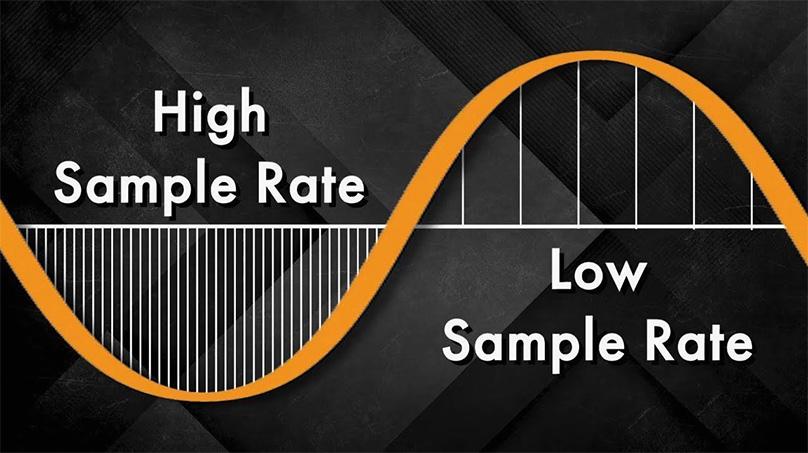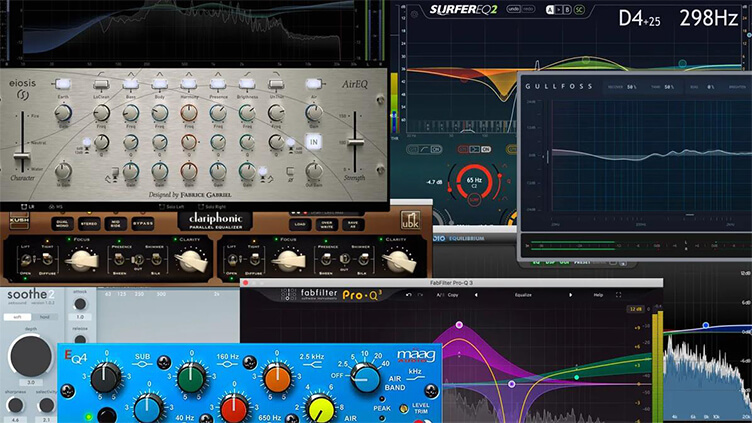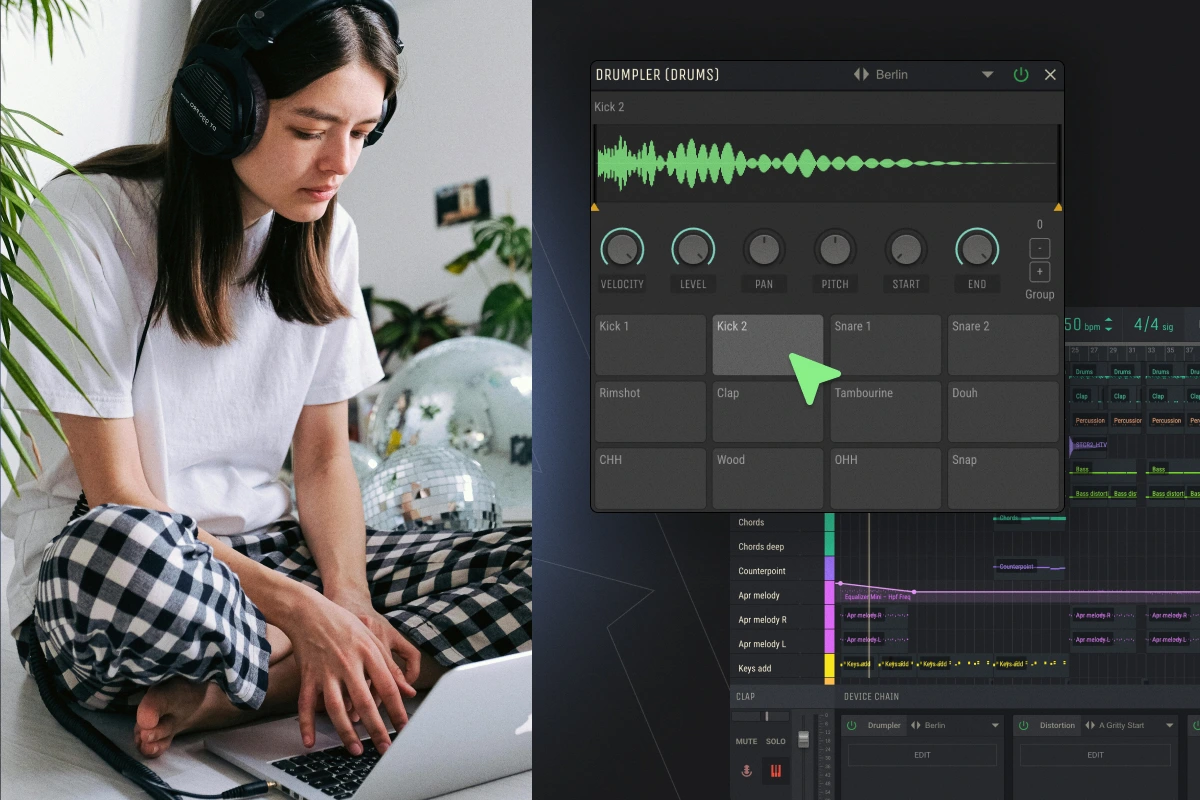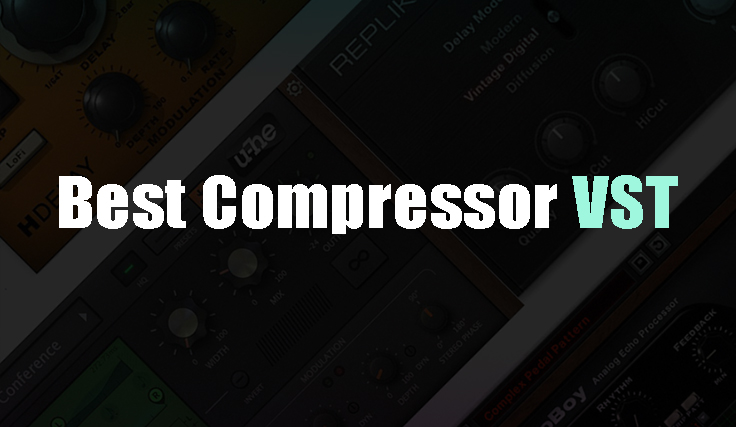What is reverberation?
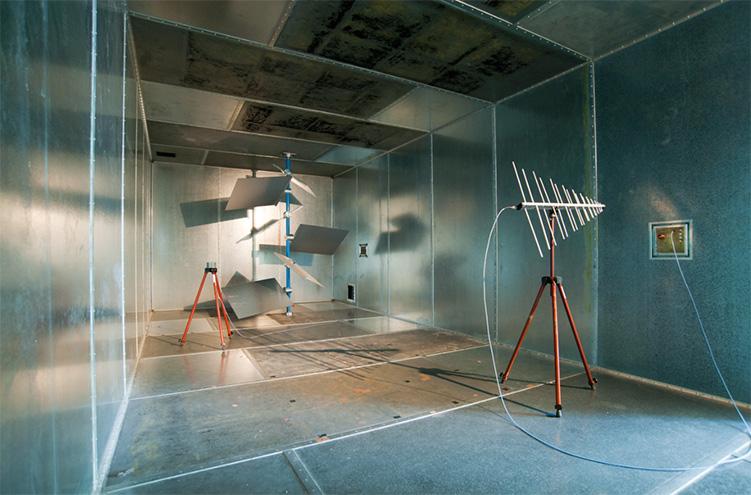
Modern track processing technologies allow achieving any desired sound effects, increase depth, and improve sound quality. Here we will tell you what reverberation is and why you need it.
Essence of technology
Reverberation as a special effect is a reflection of the world around. We are always and everywhere surrounded by various echoes; they may be imperceptible, but this does not change anything. These effects belong to the reverberation category. They may remain imperceptible under normal conditions, but they immediately appear in a large hall or at a stadium.
While playing the guitar, recording tracks, various acoustic effects are played back; they are controlled using different types of processors (they will be discussed in detail later). Reverberation creates a unique sense of space, time, just a mood. It is, in fact, a tool of self-expression. Acoustic effects are formed as a result of reflection of sound waves from surfaces in a room. The result is even more reflections. The intervals between them are so minimal that the human ear is unable to catch and identify each individual vibration – we hear not individual echoes, but all at once. The effect begins to intensify when staying in small rooms – sounds will be reflected from existing surfaces, including after playback stops.
Important: The reverberation principle is simple: the larger the room, the stronger it is.
The acoustic effect is reproduced using third-party instruments. Due to this, you can change, weaken, enhance the natural sound.
How it all works
Reverberation implies the sound of a set of fading sound reflections that are repelled from the primary sound, reflected from surfaces. Changes can be different in nature, taking into account the area of the room, dryness, humidity and other variables. When you add digital effects, the level of density and different degrees of depth blend with the elements around. The effect allows the track to sound as full and deep as possible. If desired, you can shape the effect in such a way that it will sound along with many different reverberation effects.
Why use a reverberator at all? It is not uncommon for a song to come out dry, despite the emotional component of the instrument, vocal. Music filling is simply incapable of occupying all the empty space in a track. Camera tests will help you choose the best option in a particular case. Of course, there is always the possibility to adjust the room reverberation indicators for the benefit of the final production, but many studios do not have special acoustics for room processing. As a result, reverberation turns out to be a more difficult task than it was originally expected. The fact is that the parameters should be adjusted and tuned according to the clear needs of certain tracks. Do not try to fill the space with wet sound signals. Yes, it helps, but there are risks of collisions with other components of the audio track. It is worth using studio headphones to understand that you distinguish every audible detail and you can make a reverberator with optimal settings.
Types of reverberation equipment
Musicians, sound directors were constantly looking for additional opportunities for controlling effects, creating various tools to solve this problem. Initially, instruments were very large; they were installed permanently in premises, and there was no question of transportation, for example, to a concert. Now, due to compact pedals, plug-ins, built-in amplifiers or processors, the equipment has become quite functional and compact at the same time. You can take the effect with you on a trip, to a concert, to the studio, and so on.
Acoustics chambers
Quality room reverberation is a major concern for most digital instruments. An important point is the placement of the microphones. They must be positioned in such a way as to capture all effects and audio waves correctly.
In some studios special separate rooms are provided that create a controlled type of reverberation. A popular example is echo rooms that saturate the signal. They become part of the sound effects chain.
Mechanics
Engineers have been constantly working on creating mechanical reverberators to control sound effects. Main categories of devices:
- Plate Reverb, plate type reverberator.
- Spring Reverb, spring setting.
Plates
Plate equipment allows you to control the effect. Its work is based on the principle of reflection of the behavior of waves in the surrounding space. There is a 120*240 cm steel alloy plate inside the plate-type device, it is suspended and strongly stretched onto the frame. A speaker is connected to one end, causing the device to vibrate.
Despite the elementary design, the working principle was far from perfect. Microphones caught not only the necessary, but all sounds. Therefore, the plates were used indoors. The intensity of the acoustic effect, the time of its decay were directly dependent on the dimensions and working density of the plate. In order for the effect to be spatial, voluminous, large-scale installations were required. During the existence of the equipment, a list of modifications of plate devices was developed. The main part of the changes affected the dimensions of the plate and the materials used. Sometimes the insulation was performed with a special sealant – this improved its quality, gave the equipment mobility and compact dimensions, and affected the quality of sound transmission directly.
Plate devices are still in demand today. New models are almost never released, but emulators of well-known models are constantly appearing. The sound is high quality, the effect is convincing.
Springs
Or spring devices. In many ways, they work on the same principles as plate ones, but there are differences. In springs, a spring (one or several) is used instead of a plate. A signal passes through the springs in the devices. Since there is no need to integrate microphones, speakers, spring reverb devices are more compact than plate ones.
Spring acoustics have a brighter, more memorable sound. Spring processing is considered an unspoken synonym for surf music. Musicians love Fender amplifiers precisely for the unique effects of the built-in springs. Rich, tight sound blends perfectly with the original waveforms.
Digital
The effect built into the combined amplifiers allows to emulate the space in the rooms, accurately recreating the effects of Spring and Plate types of devices. After the appearance of impulses, playback became extremely realistic. Problems with the placement of microphones, the search for studios disappeared. In fact, the effects can be customized absolutely as you like.
Digital acoustic processing creates an atmosphere of intimacy, complete isolation. It is used when recording various covers.
Combined use of reverberation
Reverberation is a very effective, multifunctional tool that makes the musician’s playing expressive and bright. There are no strict rules for using a reverberator, but the basic recommendations must be taken into account.
So processing is placed closer to the end of the chain of sound effects. If you connect distortion, processing will be performed both for the signal itself and for its reflection. All sounds will be saturated with distortion, which will create an unpleasant mixture in which it will be almost impossible to navigate. If you place the distortion before the reverberation, a qualitatively different effect will be achieved. The sound will be like in a large studio on a high power stack.
The ideal way out of the situation can be considered playing through the built-in type of distortion on the amplifier. The loop is located after the preamps in the chain. Due to this, the reverberation gets clean, but it does not affect other effects. The main thing is not to overdo it with the effects.
For the convenience of the musician, the sound director, the effects are equipped with regulators (mixes). Use the knob to adjust the signal balance. The musician can add reverberation, adjust the number of effects in the overall signal. It is only necessary not to forget about the sense of proportion – if there are too many effects, the clarity, readability of the sound suffers, the “cave” effect appears.
How to use different types of reverberation
We found out what a reverberator is and considered different types of it. Now let’s consider the features of using different types of processing.
Chamber
This category of reverberator is used for analog recordings. It perfectly fills the frequency ranges and does not jam anything. Chamber reverberation is indispensable in classical, pop music. There are different types of chambers that you can also work with, and they show a unique sound, taking into account the material of the chamber, the current volume. Chamber reverberation is a great option for creating simulations in dedicated spaces.
Churches and cathedrals
Cathedral is a reverberator model that is ideal for the application in considered conditions. These can be dramatic parties, choral ensembles, compositions performed on the organ. The sound becomes dramatic and expressive. The standard reverberation begins to fade due to the size of the cathedral. Therefore, if you want to achieve the perfect sound, use the appropriate devices. Quality devices for churches have an optional combination of indirect and direct sounds.
Gated Reverb
The type uses noise reduction to shorten the decay paths of the reverb effect, giving it a noticeable echo. Gated reverb sounds great with bass, vocals and more. The popularization of the tool occurred in the 80s of the past century.
The use of digital technology allows to achieve optimal purity, guarantees a powerful decay duration. Adjusting parameters is an easy method for making quick, significant corrections.
Halls
The style is found in spacious halls, at performances, concerts. The use of hall reverberation during performances can give vocals a lively, full sound. The technique is suitable for drums. Concert halls are designed and built in such a way that the sound decays spontaneously.
Convolution
Not every plug-in uses ultra-precise reverberation, but this is really fantastic. Recording options are available in digital format, reverberation imitation. The tool is suitable for sound designers, indispensable while working on film and television projects. It allows to achieve high accuracy and a good range of settings. You can use ultra-precise settings for processing “dry” recordings.
Plate
Unique style in terms of performance. The basis for the manufacture of installations is a sheet of metal – it is placed inside the case, suspended together with the converter located at the center. As in the electrodes, a pair of pickups is located in the body. When the signal passes the transducer, it begins to reproduce physical vibrational effects. And if a sheet of metal vibrates, reverberation occurs.
Spring
Another popular reverberation method is spring reverb. The option is easy to implement and it perfectly complements live tracks. The sound is metallic, it ideally complements songs in rock, romantic blues, heavy metal styles. The springs on the box are responsible for creating sounds. When they vibrate, sounds reflects from the box, resulting in an echo. Caution is needed with spring processing – it has a high sensitivity, and it highlights the tonality.
How to understand what needs to be processed
The choice of a particular processing style is not an easy task often requiring practical experiments. But here another question arises: how to understand that a reverberator is generally needed?
Purposes of using the tool:
- Improvement of track integrity;
- Giving a certain meaning, richness of sound;
- Filling voids;
- Idea of cohesion.
Cohesion
Reverberation provides a merger of the track and gives the piece a whole, deep sound. When it comes to reverberation plugins, most performers create custom solutions. The method exists and is applicable, but it leads to a collision, mutual overlap of different effects. Heterogeneous parameters distort the sound.
Another technique is to send each track to one bus. In fact, the tracks are placed in a single space, instead of using a set of plug-ins that create a single, holistic space.
Depth
Vocals, instruments in the early stages can give a two-dimensional, dryish sound. A simple solution to the problem is reverberation processing. The main thing is to pay attention to both parameters – this will help maintain integrity.
The solution requires professional headphones that allow you to hear the smallest details of the processing result. Given the selected type of reverberation, you can give playfulness, airiness to vocals. Too much depth is the other extreme, so your task is not to overdo it.
Filling
In music, especially at the first stages of production, situations of empty spaces in the track often occur. There are no vocals, no instrument for them. If there are too many such voids, the sound quality will suffer.
There is no point in filling the path with anything random. Here reverberation comes to your aid. The tails must fill the current voids.
Digital or analog?
Hardware devices bring a certain authenticity to production, which is their advantage. Even now, when digital innovation rules the world, hardware processing does not lose its relevance.
Digital devices are practical to use, convenient, functional. You can create different styles of effect overlays the way you see fit. A lot depends on the needs of the sound production and what specifically sounds good in a particular style.
Possible problems
Users tend to make the following mistakes that reduce the quality, sound effect. Learn and don’t repeat.
Low level equalizer
A good equalizer is very important, it creates the bulk of the effects. It is not recommended to adjust certain effects without special need – the reverberation itself adds depth to the track and gives sound quality. It is important to make equalizer settings as precise as possible to suit the needs of your particular production. Otherwise, there will be problems with tonality.
Tails mess
Tails collision is another situation when professional headphones will come in handy. Each reverberator creates its own unique tail, which can be adjusted using the plugin. Even if you control the working equalizer, it may interfere with the instrument or vocals, which will break the harmony.
Using reverberator at random
Blind processing always gives negative results. Spend time listening to the music and appreciate the sound quality of the tuned reverberator. Make sure all components interact as they should. If you simply apply a random reverberator to the current vocal without any preliminary settings, haze or extraneous metallic notes may appear when playing the track. So you always need to build the parameters sequentially, taking into account the direction of the track.
Wrong settings
It’s important to have a clear idea of how to apply a particular kind of reverberation to the particular track you’re working on. Understanding the characteristics, their correct application will bring production to a high level. Here are the main settings that should be set and adjusted if necessary.
Pre-delay
It’s about the time it takes for reflections to work. We are talking about a pause after the completion of the playback of the initial audio source.
Attacks
By carefully adjusting the attack parameter, you can determine exactly how long it takes the to reach a given stable intensity. The value helps to mitigate problems in case of collisions between the elements of the audio track, creates space for the implementation of the desired effects.
Decays
This parameter indicates the amount of time it takes for the acoustic effects to decay. Make sure the value is at the right level and the space is filled correctly, there is no risk of reverberations collision.
Diffusion
This characteristic determines the degree of complexity of the reverberation device, sets the density, shape, which can be manipulated to achieve dense or thin sound.
Mixing
Mixing is an important function. It is responsible for controlling the balance of wet and dry signals. When dry signals are increased, the original sounds begin to show through, when wet – maximum reverberation is obtained. You need to find the optimal balance and set the appropriate settings.
Dimensions
It is about the length of the reflections of the waves. In fact, by increasing the size you expand the area of the room.
How to set up the reverberation: recommendations
Imposing a new sound effect on a track without additional settings is not the best solution. It is advisable to make fine adjustments in order to achieve a harmonious, high-quality sound. Yes, music is an art, and it is subjective, but you can try to achieve optimal parameters.
Choose the type
The plugin you are using most likely has presets available. It’s good to study them carefully and choose a preset that gives the perfect sound, then adjust it. It is important that the reverberator is as harmonious as possible with the sound of the track as a whole. Dry space should be removed delicately, not clumsily.
Make a pre-delay
Setting the correct pre-delay is really important. If the parameter is set incorrectly, the track may sound at the wrong tempo. If you set the parameters to medium, you will get a slight delay.
Define diffusion
taking into account the equalizer in the song. If there is moisture in the composition, other reverberations, it may be worth choosing a light diffusion, for example, a reverberator with flat sounding that will not conflict with other devices and clutter up tracks. With significant diffusion, the sound comes out dense, immersive.
Program the decay
The decay determines how much specific time must elapse before the end of the reverberation. Match the characteristic with the dimensions of the reverberation. If dimensions control room volumes, then attenuation plays a significant role in providing an optional mode termination. Is the room very large, and should the attenuation be delayed? Thus it will really be as harmonious as possible. Note that long reverbs should be quieter than short reverbs.
Set your mixing levels
The search for a balance between the amount of reverberation and the original sound is a significant parameter that requires correct selection. To select the perfect mix pay attention to dry and wet mixes.
Place the reflection
The listener’s ears pick up all reflections, they can drown out the tracks, break down the tempo. It’s best to think of reflections as echoes – that’s how they sound most of the time. If you’re interested in a bright reflection, turn up the volume, make them early. Watch for compatibility with the tempo of the track, the rest of the notes.
Perform frequency decay
It’s about reducing high frequencies that go to the reverberator. If there are too many of them, the sound can come out metallic, unpleasant. Start removing high frequencies from 4-8.
Reverb
Understand this parameter – it is responsible for the level of tail breakage. The viral effect appeared back in the 80s of the past century, but is still of considerable importance.
Adjust the modulation
Separate plug-ins modulate the reverberation effect, and this allows you to adjust the reverberation parameters. Music, if you do everything right, will come out not stagnant, but lively.
Perform damping
It is a must for very harsh reverbs with high frequencies. Damping will change the overall tone, making the sound warm, pleasant.
How to remove reverberation
There are times when there is a natural reverberation in the recording that you don’t like. The easiest way to remove it is to use an equalizer that removes current frequencies. If the reverberation overloads low, high frequencies, you can cut out the wrong part, and the reverb itself will immediately fall. It will most likely not disappear 100%, but you will see the difference.
Partial measures are not enough? Use a special plugin – a lot of options are freely available. One of the most popular is ERA 4 Reverb Remover.
Conclusions
Reverberation can be the best friend of a guitarist and any other musician. It quickly and effectively fills the voids between notes, gives the sound volume and density, and improves the quality of signal transmission.


